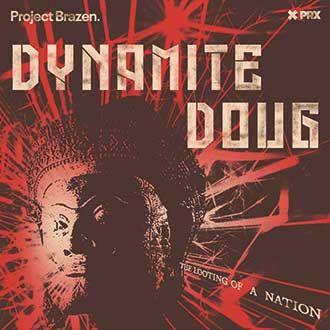Conversations around repatriation and the return of stolen art to its country of origin have finally moved into the mainstream. But it is still relatively rare to hear, outside of the industry, about the people who have recently been involved in the illegal antiquities trade. The new podcast Dynamite Doug tells the story of how Douglas Latchford and his collaborator Emma Bunker illegally removed hundreds of sculptures from Cambodia, often by faking provenance records and export licences, to fill the galleries of museums in the West. Latchford was charged for antiquities trafficking in New York in 2019 but died the following year.
The narrative of Dynamite Doug zips along. The host, Canadian actress Ellen Wong, does an excellent job of presenting the story about Latchford and his associates, with only the occasional predictable Indiana Jones joke. As an introduction to the illegal antiquities and art trade, Dynamite Doug is good. Its pacing and accessibility will, hopefully, push listeners to think about the objects they see in museums. The season is short, with only six 30-minute episodes, and I found myself waiting for a crescendo at times—the compactness makes the series an easy listen, but the podcast format does not allow for the kind of footnoting and deeper context from which a story like this would benefit.
Latchford was not alone
Latchford’s case is well known to those in the museum sector, but he is one of many dealers and collectors involved in the modern colonialism of white-collar art crime. Dynamite Doug frequently describes Latchford’s dealing as the “plunder of an entire civilisation”, and the number of objects that passed through his hands is horrifying, but the show has a tendency to make Latchford its main character to the point of absolving others of responsibility.
There are a handful of references to other acts of looting—throwaway comments that mostly serve to emphasise the scale of theft from Cambodia, and slightly disingenuous claims that “unlike the Elgin Marbles, and other brewing controversies over stolen art, our story isn’t ancient history, this is happening now”, as if there is not active looting happening across the world. These comments do not really give a sense of just how many looted objects are in museums in the West, or in private collections. They also do not do justice to the messy international politics that play out in repatriation debates. What kind of give-and-take is happening behind the scenes here? Latchford was known to repatriate sculptures as a distraction for the scale of his crimes—what choices are being made by the institutions that are now returning works to Cambodia?
Then there is the sometimes naïve, sometimes self-serving complicity of museum staff such as Martin Lerner, who was praised in 1997 for spotting that one of the Khmer statues in the collection of New York’s Metropolitan Museum of Art matched an image in the International Council of Museums’s 100 Missing Objects: Looting in Angkor guide, and returning it to Cambodia. But Lerner was instrumental in laundering the provenances of statues sold by Latchford, and their relationship continued into the 2010s.

A Harihara, a Cambodian stone deity in the Met’s collection, believed to have been looted by Latchford
Photo: public domain
The question of how deeply museums are invested in, and benefit from, the trade in stolen art could be given more space. Why was the art world so willing to turn a blind eye, even when Latchford and Bunker regularly contradicted themselves about the provenance of statues? The auction houses Sotheby’s and Spink & Son that sold such looted works were presented with ample evidence of looting, through both the sketchy provenances and the physical condition of the statues they sold. These were not brilliant criminal masterminds: they were enabled.
Although the research in Dynamite Doug is not new, this method of storytelling is still fresh enough to compel. Following the popularity of the podcast Stuff the British Stole—which began in 2020 and takes a different approach, focusing on one object or collection in each episode—it makes sense that we will see more podcasts about colonial theft, and hopefully a broader audience for the campaigners and researchers driving repatriation. Dynamite Doug’s story is fascinating, Wong’s narration is engaging, and the interviewed experts are excellent. It could be more, but I think we are at the start of the genre rather than its peak. After all, there is not exactly a shortage of art crime to cover.

























